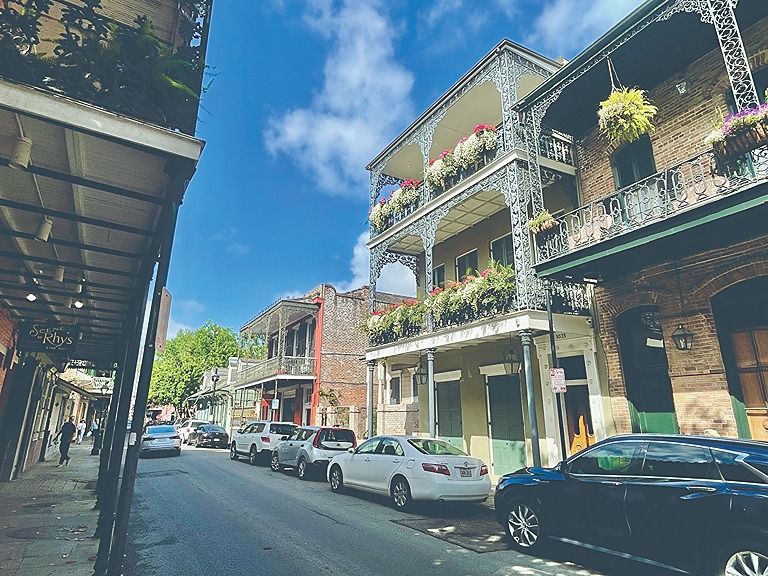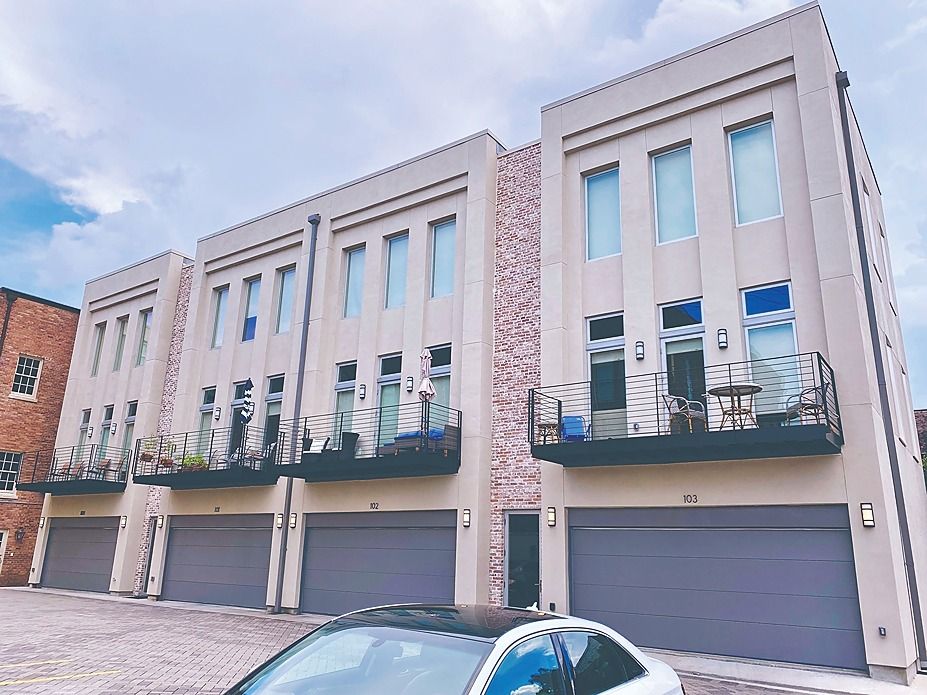French Quarter Matters
Anyone who's spent time in the French Quarter has heard of the Vieux Carré Commission, and those who live there may have become intimately acquainted with their guidelines and restrictions.
This official government organization has gained the reputation as keepers of the Quarter, protectors of the past, and the police of preservation. Many people view them as quick-judging, permit-wielding, history-loving watchdogs out to tell homeowners in the French Quarter what their windows have to be made of and what colors to paint their trim. Big Brother is watching, and he's coming after you with a paint swatch and a housing violation.
But that impression of the Vieux Carré isn't the full story. The truth is, the VCC does many great things for New Orleans and the French Quarter, which is the only neighborhood actually under its jurisdiction. One thing that people love about the city—and that attracted nearly 20 million visitors annually in pre-Covid days—is its old-world charm, architecture, and perfectly intact history. That is thanks to the Vieux Carré Commission.
We met with Bryan Block, director of the VCC, to find out about the organization and why their mission is so important to New Orleans.
"We consider ourselves to be custodians of the historic buildings and the ambience of the Quarter," he says. "It's about maintaining the historic architecture of the Vieux Carré itself." They also have the broader task of the overall upkeep of the entire neighborhood as a whole, including maintaining sidewalks and installing 5G technology.
Vieux Carré Commission
The Vieux Carré Commission was founded back in 1936. The French Quarter was falling into disrepair at the time, becoming a slum. Then, a few people who cared enough to try to bring the Quarter back set out to save it and make it a historic district. They created the VCC, and gave it statewide importance by getting it officially backed by the Louisiana State Constitution. So anything the Commission does must pass up the chain of command. Block and his staff answer to a committee of nine higher-ups who are city officials appointed by the mayor.
"What we do has the reinforcement of the rule of law," Block says. "It isn't just subjective."
Block explains that the VCC requires permits for any renovations on the exterior of any building, even if it can't be seen from the street. That includes courtyards, roofs, balconies, carriageways, exterior walls, even the installation of security cameras.
"The way we say it is anything that touches air," he says.
This also applies to renovations being done "to match existing." That can be frustrating for residents who don't want to get a permit to fix up their house to look the same as it always has. But, Block explains, they might use materials that don't necessarily fit the historic mold, like asphalt roofing, for instance. "What you say is the same, and what historically is the same, are not always the same," says Block.
You can go wild with what you do inside, however. Knock yourself out with zebra-print wallpaper and blow-up furniture. The VCC has no say over the interiors of buildings, unless your desired changes are structural.

Easy in the Big Easy
The VCC attempts to make the permitting process as easy as possible, with everything done online. Two building inspectors patrol the Quarter to follow up on permits and check the status of work so everything's being done by the book. They respond to complaints, answer questions, and issue violations, which can be anything from having the wrong light fixtures or doorknobs to letting your place fall apart.
Residents deemed in violation must make the necessary changes to their building or be taken to court or charged a fine. They also have the option to appeal. But keep in mind that the VCC is really not out to get you. Violations are meant as a method of preserving the historic aspect of the French Quarter, not as vindictive punishment. Fines are a last resort.
As for the VCC's control over what color you paint your house, there's a logical reason for it. They want to make sure that the paint colors are appropriate for the style and period of your home—as it would have been painted back in the day. "It isn't that we're trying to say that you can't have your house be a particular color," Block explains. "We're saying, 'What would be appropriate on your particular house type and style and in vintage?'"
To ease the paint-selection process, the VCC, in cahoots with a local paint company, is planning to roll out a line of VCC-approved paint colors available in stores within the next few months. Homeowners can sidestep the requirement of contacting the VCC to okay their desired paint color; they'll grab an appropriate color for their house straight off the shelf.
Old & New
But how do you explain the buildings in the Quarter that seem too modern to be allowed? Take, for instance, those apartments built in the parking lot behind the St. Louis School on Dauphine Street. They're ultra-contemporary with a hint of a French Quarter twist—kind of like they were designed by a Victorian version of Frank Lloyd Wright. They stick out like aluminum siding on a 19th-century brick townhouse. How did the VCC let those slip by?

Well, according to Block, those buildings, built around 2018, are perfectly at home there. The VCC not only allows but encourages new construction, as long as the new buildings are a precise historic replica, or a contemporary building "that responds appropriately to the historic nature of the district in materials, proportions, windows, door openings, scale."
"The way that preservation best practices are designed is that in historic districts like ours, it's not a museum; it's a living neighborhood," he says. "And it is inappropriate to create a false history by demanding [new] buildings be designed in a particular historic style that isn't of our period."
So what would he tell those French Quarter residents who'd like to do whatever they want with no restrictions or repercussions—those rule-breaking rebels who'd love to paint their house in neon pink stripes or put a glass-front atrium on their balcony?
Historic District
He'd remind them that the Vieux Carré Commission—angels of antiquity, babysitters of the bygone—are doing what they do because it's important to keep the French Quarter historic. That means regulations.
"The nice thing about being in a historic district is that you can depend on the fact that the historic nature of the district is protected. And that's why people choose to live and work and play there," he says. "And unfortunately, I think the case can be made that most people as a whole, left to their own, would probably not maintain the French Quarter to the degree that it is maintained."
If we want to keep up the quaintness and charm of the French Quarter that New Orleans is famous for and that we all love, we need to play by the rules. "It's hard," Block says, "but it's worth it."

